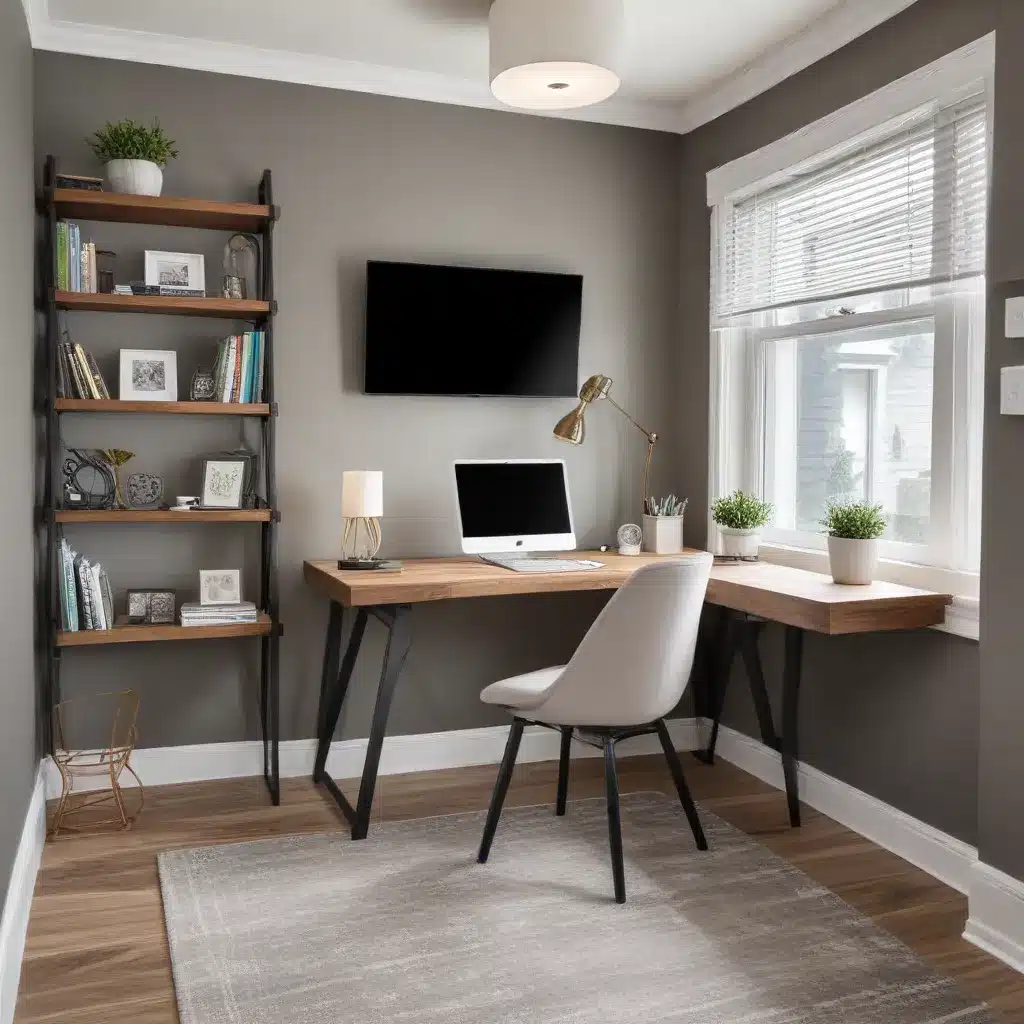
Creating a Multipurpose Home Office in Your Renovation
As the modern workplace continues to evolve, the need for versatile and efficient home office spaces has become more critical than ever. Whether you’re a remote worker, a budding entrepreneur, or simply someone who requires a dedicated workspace at home, incorporating a multipurpose home office into your renovation can be a game-changer. In this comprehensive guide, we’ll explore strategies to maximize your space, select the right furniture and equipment, and ensure your home office seamlessly integrates with the rest of your living environment.
Space Optimization Strategies
The key to a successful multipurpose home office lies in its ability to adapt to your changing needs. Flexible layouts, modular furniture, and clever storage solutions are crucial in this regard. Begin by carefully evaluating the available square footage and how it can be divided to accommodate various functions, such as work, relaxation, and even guest accommodations.
Consider built-in cabinetry and shelving that can serve as both storage and display areas, allowing you to keep your workspace organized while showcasing personal touches. Opt for multifunctional pieces like Murphy beds, convertible desks, or sectional sofas that can transition from work mode to leisure mode with ease.
Furniture and Equipment Selections
When outfitting your multipurpose home office, prioritize ergonomic and space-efficient furniture. Choose a comfortable, adjustable office chair that supports your posture, and select a desk with ample surface area and integrated cable management to maintain a clutter-free workspace. Incorporate task lighting and adjustable shelving to enhance productivity and organization.
Depending on your specific needs, you may also want to consider a standing desk, a compact printer/scanner, or even a small conference table for collaborative sessions. Remember to leave enough open floor space for movement and potential alternative uses, such as a yoga or meditation area.
Lighting and Ergonomic Considerations
Proper lighting is crucial for creating a comfortable and productive home office environment. Combine task lighting, such as adjustable desk lamps or under-cabinet lighting, with ambient lighting, like recessed fixtures or wall sconces, to achieve the desired balance. Ensure that the lighting is energy-efficient and adjustable to accommodate various tasks and moods.
Ergonomics play a vital role in the long-term comfort and well-being of remote workers. Invest in adjustable desk and chair heights, monitor arms, and keyboard trays to minimize strain on your neck, back, and wrists. Incorporate natural elements, like potted plants or artwork, to create a visually appealing and stress-reducing atmosphere.
Integrating Home Office into the Renovation
Seamlessly incorporating your home office into the overall renovation process is essential for achieving a cohesive and harmonious living environment. This may involve careful architectural integration, addressing spatial constraints, and ensuring aesthetic harmony.
Architectural Integration
If your renovation involves structural changes, such as adding or removing walls, reconfiguring floor plans, or incorporating built-in features, carefully consider how the home office will fit into the new layout. Ensure that the office space integrates naturally with the surrounding rooms, maintaining flow and visual continuity.
Addressing Spatial Constraints
In smaller homes or apartments, maximizing every square inch is crucial. Explore creative storage solutions, like built-in desks, wall-mounted shelves, or hidden Murphy beds, to seamlessly incorporate the home office without overwhelming the space. Opt for light, airy color palettes and minimalist furnishings to create an illusion of openness.
Aesthetic Harmony
Integrate the style and materials of your home office with the overall design aesthetic of your renovation. Coordinate the color scheme, incorporate complementary finishes, and select furnishings that harmonize with the rest of your living spaces. This holistic approach will ensure that your home office feels like a natural extension of your home, rather than a separate, disjointed element.
Technological Enablement for Remote Work
In the era of remote work, seamless technological integration is essential for a productive and efficient home office. Ensure that your renovation addresses connectivity, power solutions, collaborative tools, and data security.
Connectivity and Power Solutions
Prioritize high-speed internet access and reliable Wi-Fi coverage throughout your home, especially in the designated home office area. Incorporate strategically placed power outlets and USB charging stations to accommodate your digital devices and minimize the need for unsightly extension cords.
Collaborative Tools and Platforms
Equip your home office with video conferencing capabilities, such as high-quality webcams, microphones, and speakers, to facilitate virtual meetings and collaborations. Explore cloud-based productivity suites and project management platforms that allow you to seamlessly work with colleagues, clients, or team members, regardless of location.
Data Security and Privacy
Ensure that your home office setup addresses data security and privacy concerns. Invest in a secure VPN, implement strong password protocols, and consider physical security measures, like lockable cabinets or privacy screens, to protect sensitive information and maintain confidentiality.
Adaptability and Future-Proofing
As your needs and lifestyle evolve, it’s essential to design a home office that can adapt and grow with you. Incorporate flexible layouts, scalable storage, and sustainable features to future-proof your investment.
Flexible Layouts and Modular Design
Embracing modular furniture and adaptable floor plans will allow you to easily reconfigure your home office as your requirements change. This may include adjustable desks, movable partitions, or multi-purpose furniture that can be rearranged to accommodate different activities or accommodate guests.
Scalable Storage and Organization
Implement customizable storage solutions, such as modular shelving systems or adaptable cabinetry, that can expand or contract to meet your changing needs. Incorporate smart organizational tools, like digital file management or voice-activated assistants, to streamline your workflow and maintain a clutter-free environment.
Sustainable and Energy-Efficient Features
Prioritize eco-friendly materials, energy-efficient lighting, and smart home technologies to reduce your environmental impact and minimize long-term operating costs. Features like programmable thermostats, LED lighting, and sustainable insulation can contribute to a more sustainable and cost-effective home office.
By incorporating these strategies into your home renovation, you can create a multipurpose home office that not only meets your current needs but also adapts to your evolving lifestyle and supports your long-term well-being. For more inspiration and expert guidance, be sure to explore the resources available at Reluctant Renovator.



